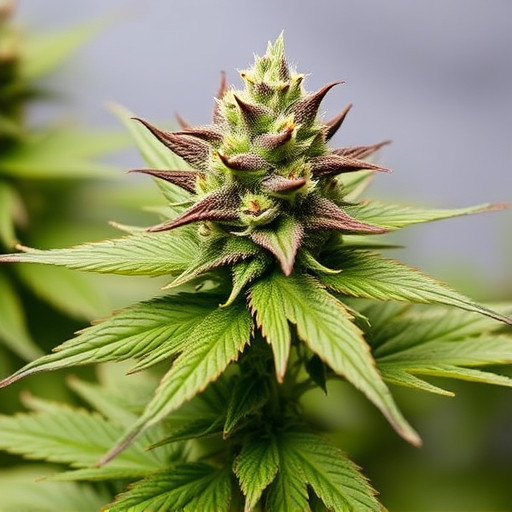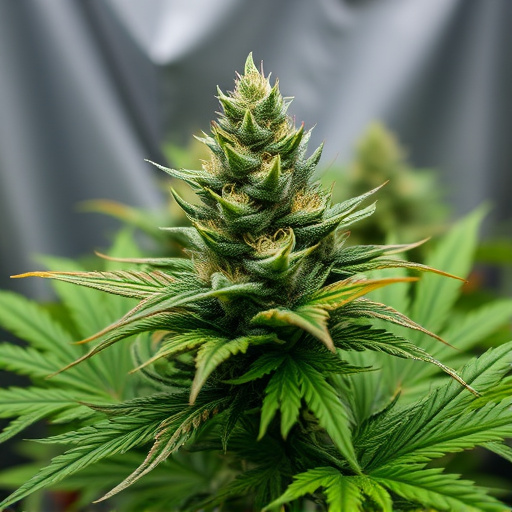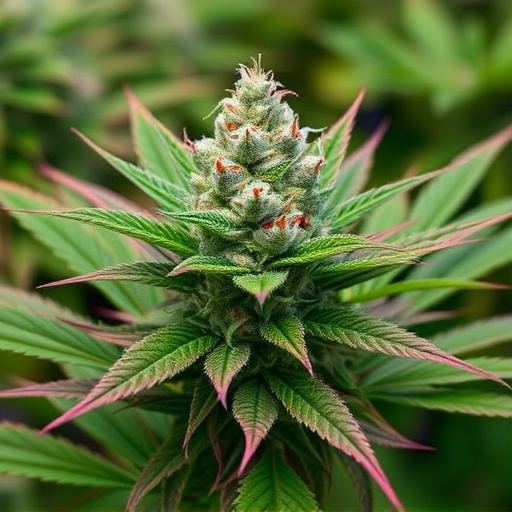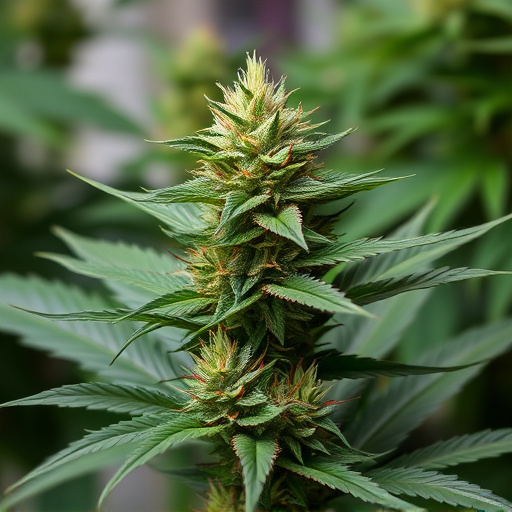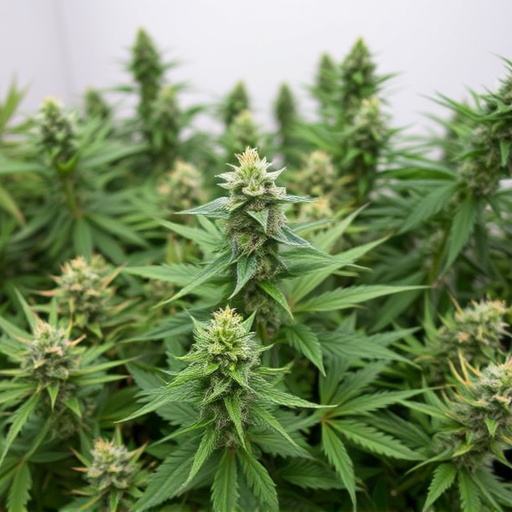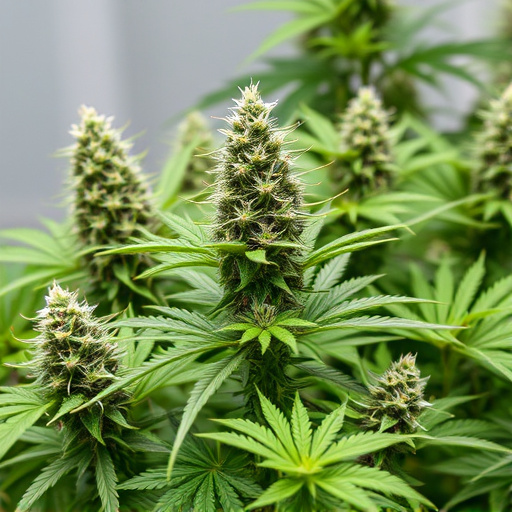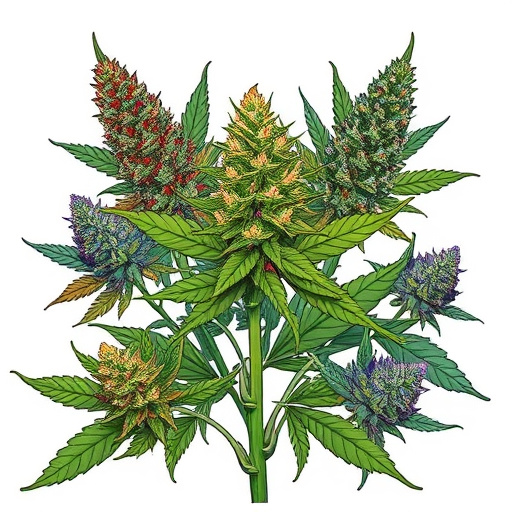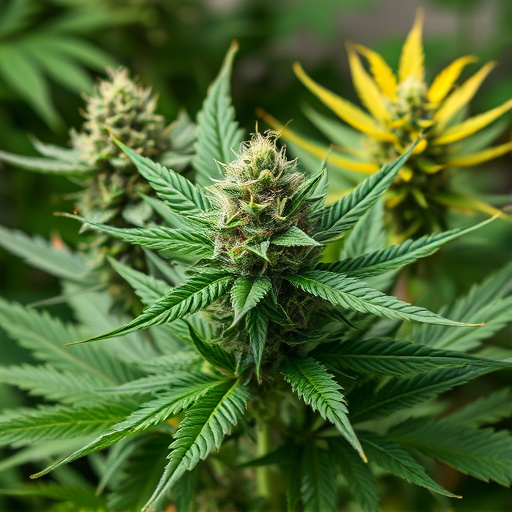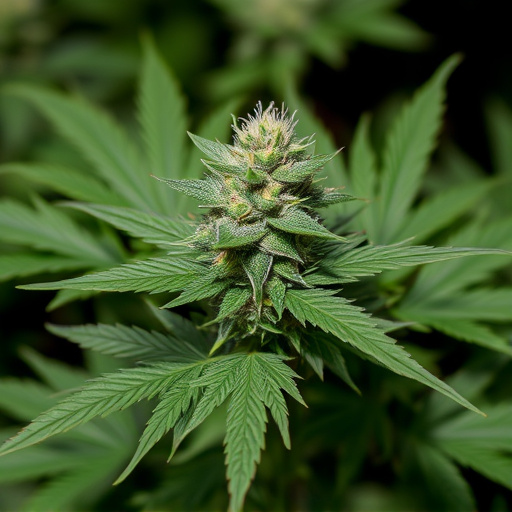Medical marijuana strains' active ingredient, THC, interacts complexly with hunger hormones leptin and ghrelin, influencing appetite and eating behavior. While THC can stimulate cravings, it also offers potential relief for conditions like anorexia or cachexia by increasing appetite. Chronic use may disrupt hormonal balance. Understanding these mechanisms is vital for both cannabis research and clinical applications, especially regarding the diverse effects of different medical marijuana strains on hunger.
Explore the fascinating interplay between THC and our body’s hunger hormones. This article delves into how tetrahydrocannabinol (THC) influences appetite and eating behavior, shedding light on both physiological mechanisms and the role of specific medical marijuana strains. By understanding these dynamics, we uncover potential therapeutic applications for managing eating disorders and weight-related issues within the context of medical marijuana use.
- Understanding Hunger Hormones and Their Role in the Body
- The Impact of THC on Appetite and Eating Behavior
- Medical Marijuana Strains and Their Potential Effects on Hunger Hormones
Understanding Hunger Hormones and Their Role in the Body
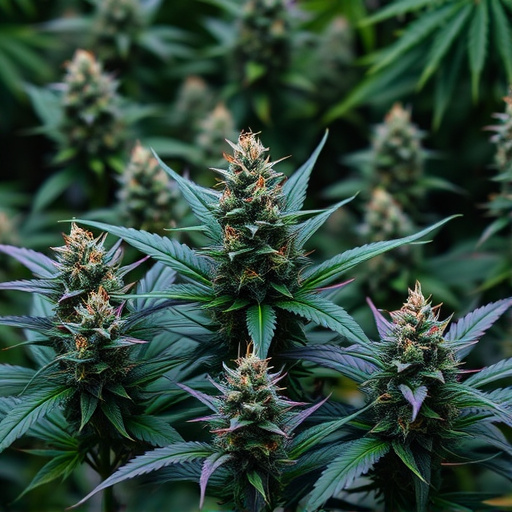
Hunger hormones play a crucial role in regulating our appetite and maintaining energy balance. Key players include leptin, which signals satiety, and ghrelin, known as the “hunger hormone” as it promotes appetite. These hormones work together to communicate with the brain’s hunger centers, triggering feelings of hunger or fullness. Understanding this intricate system is essential when considering the impact of substances like tetrahydrocannabinol (THC), found in medical marijuana strains.
THC interaction with these hunger hormones is complex and multifaceted. Studies suggest that THC can inhibit leptin signaling, potentially leading to increased appetite and cravings. Conversely, it may also stimulate ghrelin release, further enhancing hunger sensations. This dual effect underscores the variable responses individuals may experience when consuming medical marijuana strains, highlighting the need for further research into the precise mechanisms involved.
The Impact of THC on Appetite and Eating Behavior
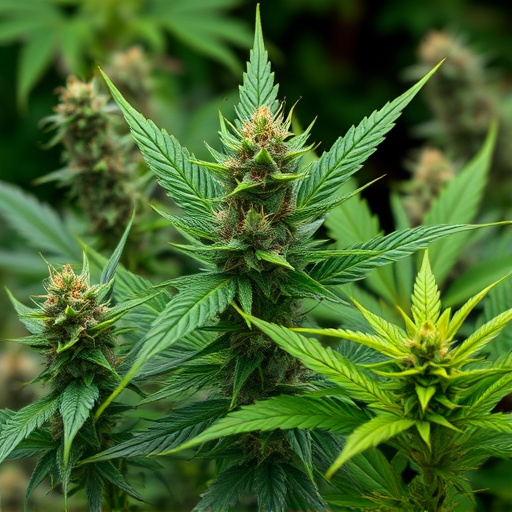
THC, the primary psychoactive compound in cannabis, has a profound effect on appetite and eating behavior. Studies have shown that THC can stimulate hunger, leading to increased food intake—a phenomenon often referred to as “the munchies.” This effect is mediated through various neural pathways, particularly those involved in reward and pleasure, as well as sensory processing. The impact of THC on these systems can result in a noticeable change in eating habits, especially for individuals using medical marijuana strains for conditions like anorexia or cachexia, where appetite stimulation can be life-saving.
Beyond the immediate effect on hunger, research suggests that chronic THC use may also alter hormonal regulation related to appetite. It interacts with endocannabinoid receptors in the brain and gut, influencing the release of hormones such as leptin and ghrelin, which play crucial roles in signaling satiety and hunger respectively. These interactions can lead to long-term changes in eating behavior, making understanding the relationship between THC and appetite an essential aspect of both cannabis research and clinical applications, especially within the context of medical marijuana strains.
Medical Marijuana Strains and Their Potential Effects on Hunger Hormones
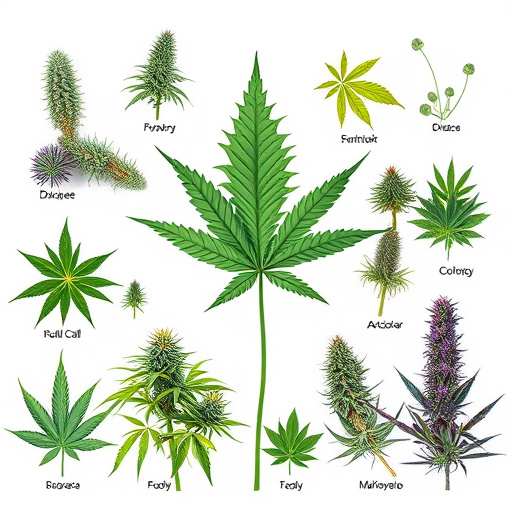
Medical marijuana strains have gained attention for their potential effects on hunger hormones, offering a unique perspective in the realm of healthcare. These strains contain various compounds, with Tetrahydrocannabinol (THC) being one of the most well-studied. Research suggests that THC interacts with the endocannabinoid system, which plays a significant role in regulating appetite and metabolism. Different medical marijuana strains have varying levels of THC, along with other cannabinoids like Cannabidiol (CBD), contributing to their distinct effects on hunger.
Certain strains are renowned for their appetite-stimulating properties, often sought by patients dealing with conditions that cause weight loss or anorexia. The high THC content in these strains may stimulate the hypothalamus, a region of the brain crucial for regulating hunger and satiety. Conversely, other strains with higher CBD content are known to have calming and anti-anxiety effects, potentially reducing overeating and promoting balanced eating habits. Understanding these variations is essential for patients and healthcare providers alike when utilizing medical marijuana as part of a comprehensive treatment plan.
THC’s influence on hunger hormones highlights a fascinating intersection between science and the effects of cannabis. By understanding how THC interacts with these regulatory mechanisms, we gain insights into both the potential risks and therapeutic benefits of medical marijuana strains. Further research is needed to fully explore these interactions, especially in the context of managing eating disorders and improving quality of life for patients relying on medical marijuana for symptom relief.


